If a Baby Chick Is Struggling to Live
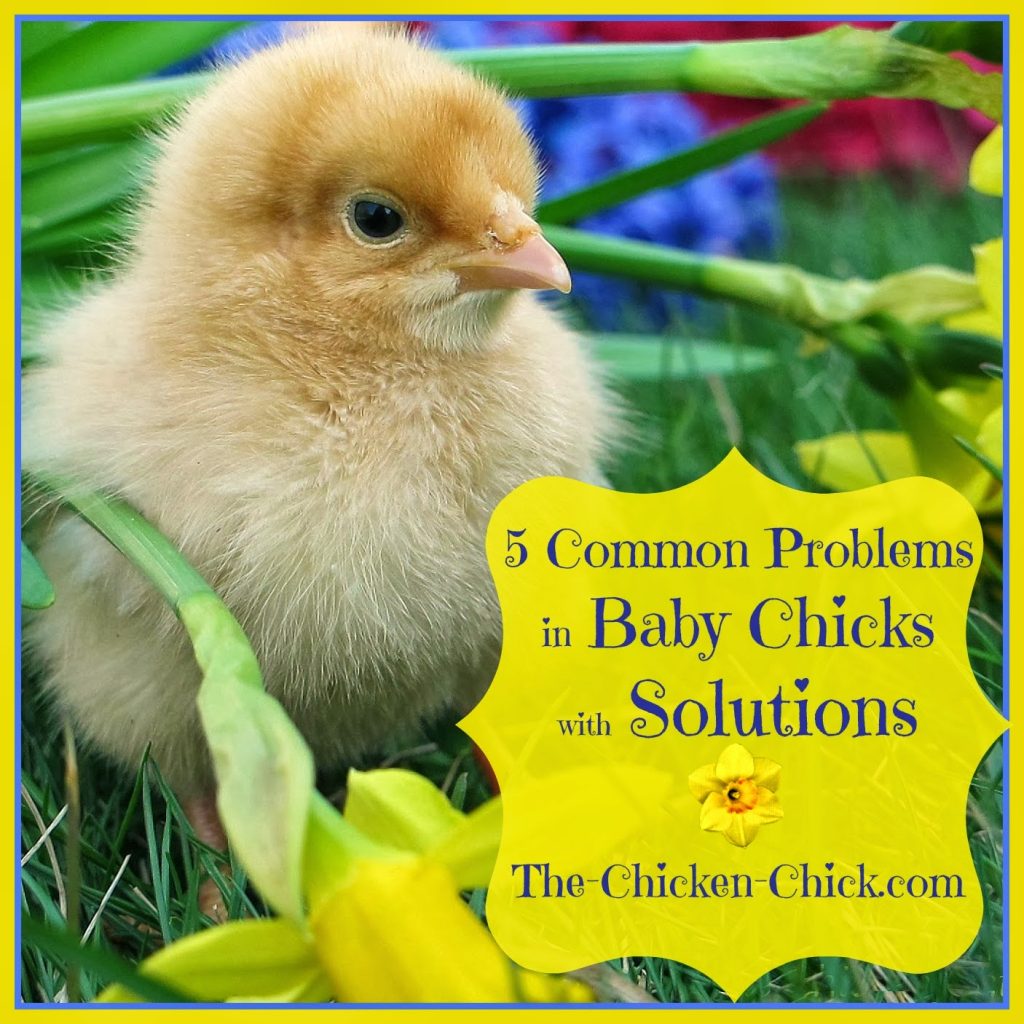
Southpring is only effectually the corner and with many craven-keepers waiting for delivery of twenty-four hour period-old chicks, this a good time to take a look at some of the nigh mutual problems that occur in baby chicks. Some of these bug can ascend in chicks that are hatched at abode, as well. In either instance, it is a skilful idea to have your Chicken Showtime Aid Kit stocked and ready for action earlier baby chicks arrive. The five virtually common problems in baby chicks are all hands treated.

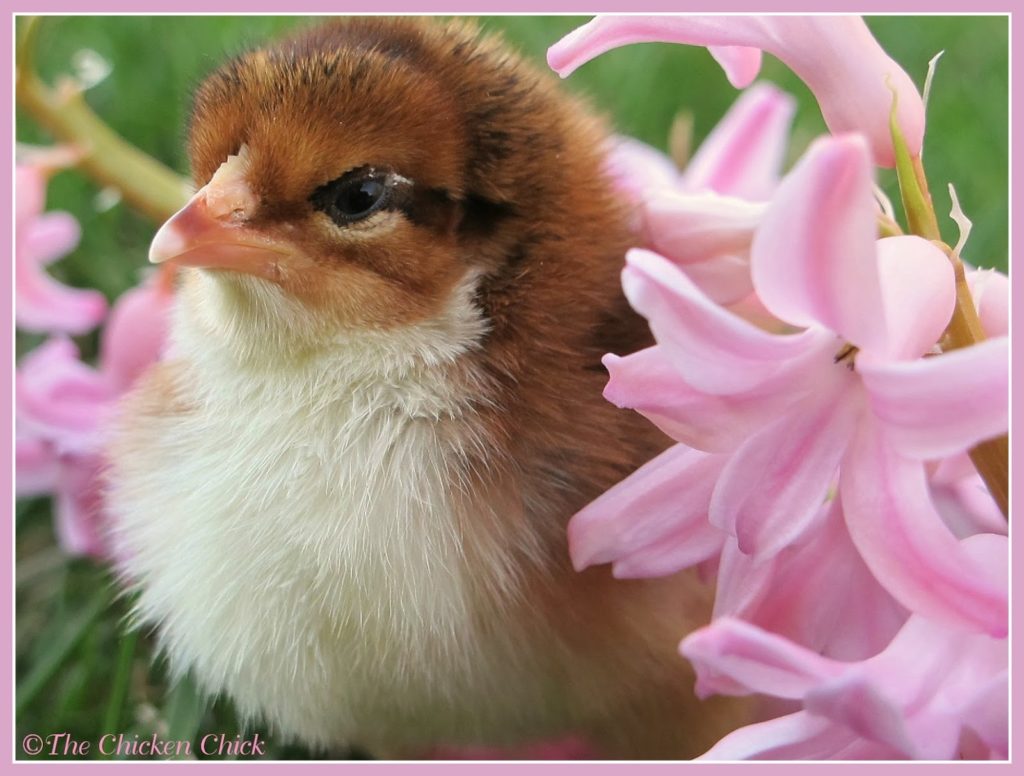
Problem #1: Dehydration
1 of the concluding things a chick does prior to hatch is absorb the egg yolk into its body through its abdomen button. The yolk is Mother Nature's protein drink- it nourishes a chick for two-3 days after assimilation. The reason this is important in nature is because a clutch of eggs can take several days to hatch and the first chicks to hatch must sustain themselves until the hen is set up to venture out with them to observe food. It is possible to send babe chicks through the mail service due to the diet provided past the yolk, however, chicks can still go far at their destination dehydrated for various reasons.
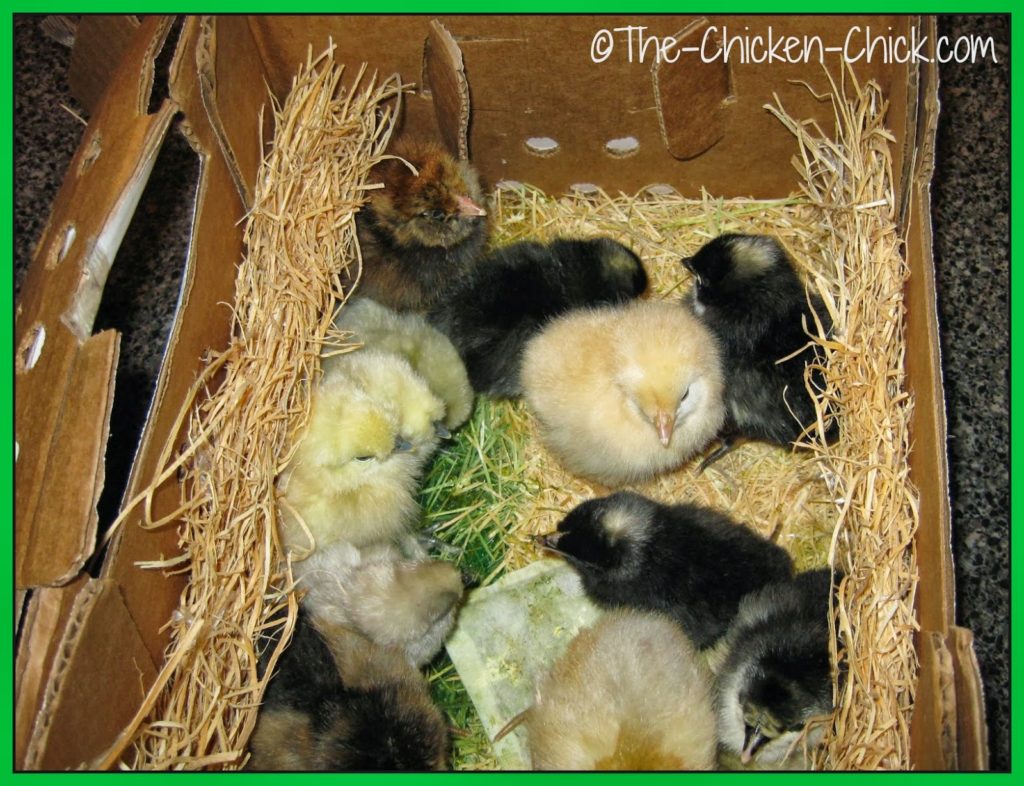
Dehydration Solution
Upon arrival, information technology'south helpful to quickly, gently dip each chick's beak into the h2o to encourage them to drink. If chicks had a rough trip and look wilted, a vitamin/electrolytesolution can give them an free energy heave and aid re-hydrate them. A sports drink such as Gatorade will suffice in a pinch, but information technology's better to use the vitamins & electrolytes in the h2o.

Trouble #2: Gluey Barrel
Glutinous butt, aka:pasted vent or pasting-up is a status where loose debris stick to the down surrounding a chick'south vent. Viscous barrel can be caused by stress from aircraft, being overheated, likewise cold or from something they have eaten. The vent should not be dislocated with the chick's belly push button. The vent is the surface area on a chick where droppings and eggs go out the body. The abdomen button is not the same as the vent. Day old chicks may have their bellybutton surface area crusted over a bit and this scab should NOT exist removed as it is a remnant of hatching, which will dry out up and fall off on its own. Pulling it off tin can harm the chick, adventure infection and even cause disembowelment. When droppings build upwardly and form a blockage around a chick'southward vent, chicks can die if it is non removed.
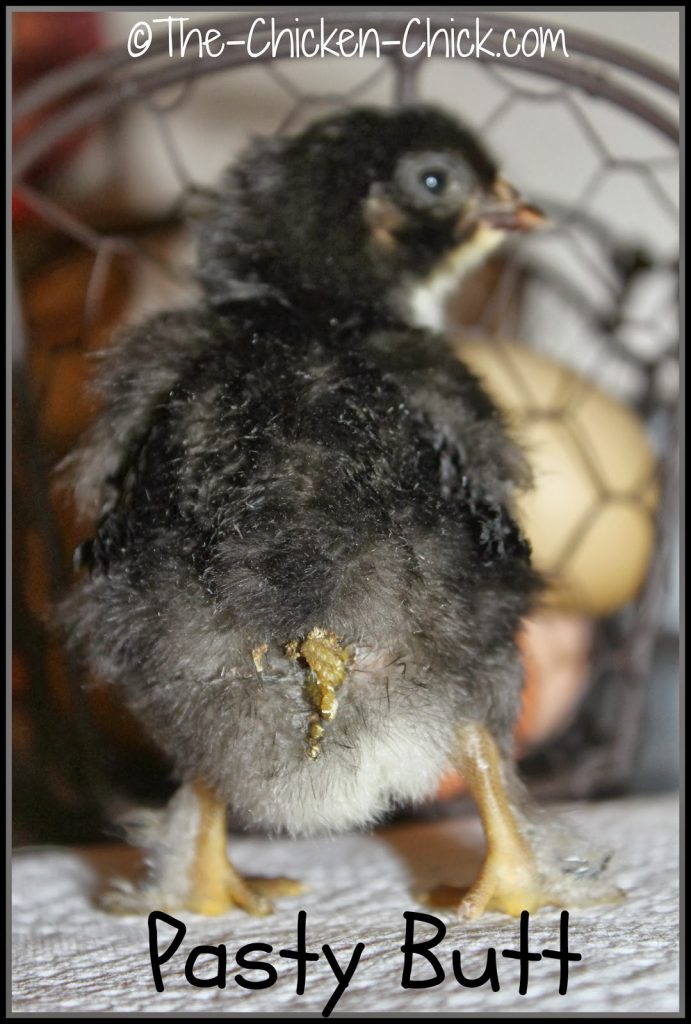
Gluey Butt Solution
All chicks should exist checked for glutinous butt upon arrival. If debris are caked onto the vent area, they can be loosened with warm water on a damp washcloth or paper towel and gently removed. Extra intendance not to pull the droppings or down because the skin around the vent can tear. Later on cleaning and drying the vent area, the application of petroleum jelly or triple antibody ointment tin can prevent the droppings from sticking to the downwards. Olive oil is not recommended as it can get rancid.
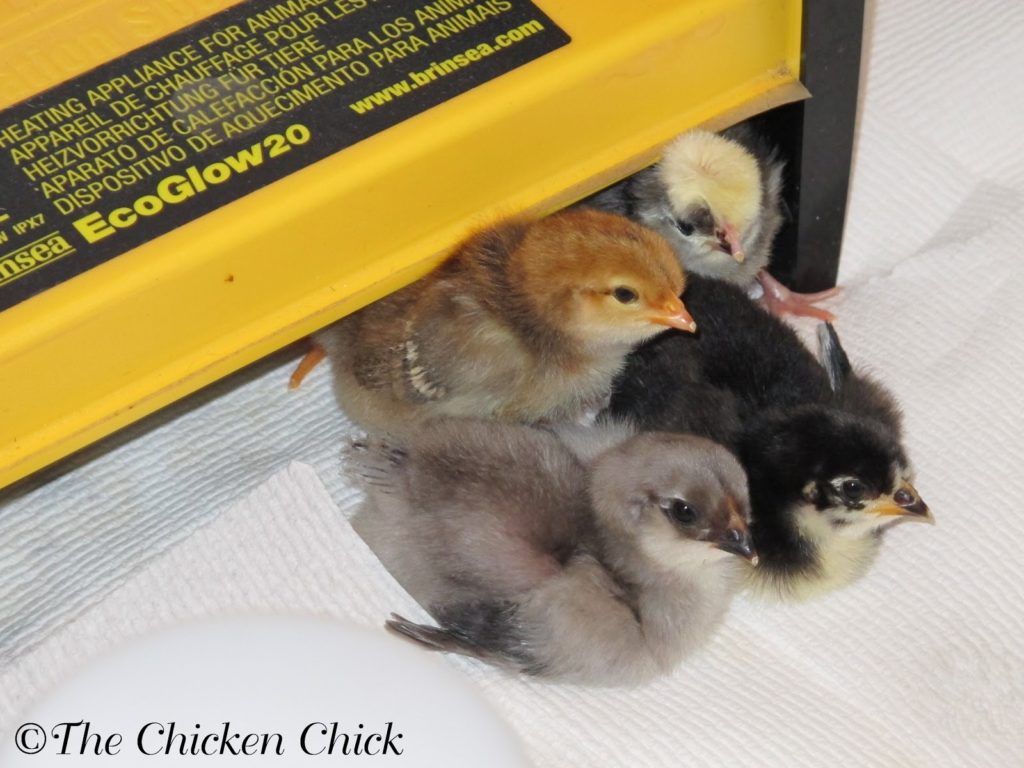
If several chicks develop viscid butt after a few days in the brooder, the brooder may be too hot and the temperature should exist adjusted. According to Gail Damerow'south book, The Chicken Health Handbook, sometimes the brand of feed poses a digestive trouble for chicks. Pasty butt can be remedied by mixing scrambled eggs in with their starter feed and if that clears things up, change brands of feed.
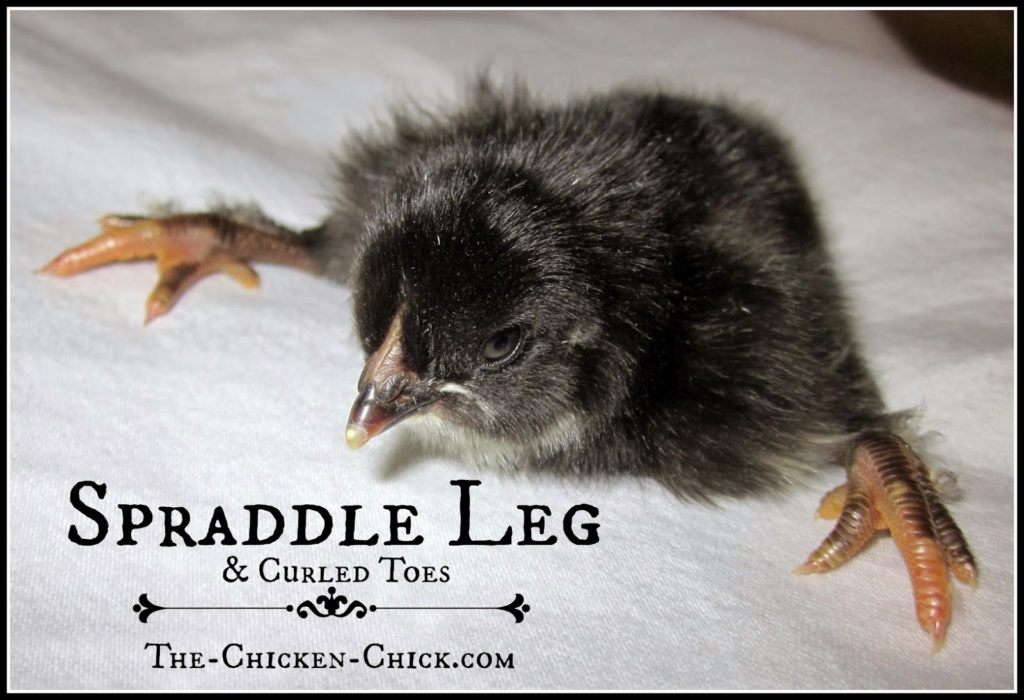
P roblem #3: Spraddle Leg
Spraddle leg, likewise known as splay leg or splayed leg is a deformity of the legs, characterized past anxiety pointing to the side, instead of forrad. Spraddle leg makes walking difficult, if non incommunicable and can be permanent if left uncorrected. One cause of spraddle leg is slick floors that result in chicks losing their basis. The legs twist out from the hip and remain in that position unless corrected.
Other causes are: temperature fluctuations during incubation; a difficult hatch that makes legs weak; a leg or foot injury; brooder overcrowding; or a vitamin deficiency.
Chicks arriving with spraddle leg volition exist obvious and should be treated immediately. The sooner it'due south addressed, the sooner the bones tin can heal in the proper position.
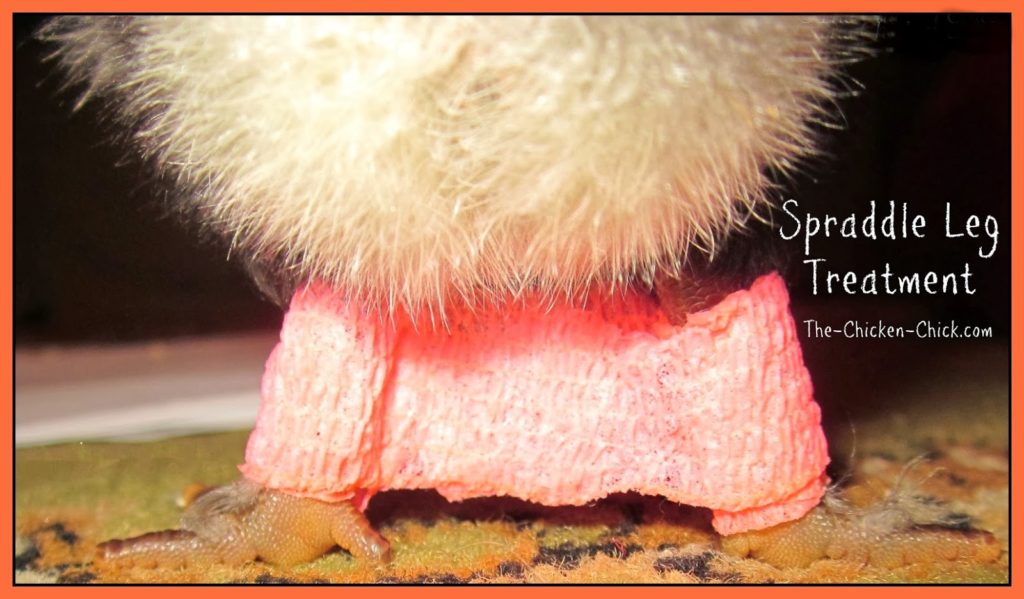
Southward praddle Leg Solution
Some causes of spraddle leg cannot be avoided, simply some can. Ane way to prevent spraddle leg is to avoid using paper or other slick surfaces for brooder bedding. Upon discovery, the legs should be hobbled (bound together in a particular manner) and physical therapy provided until the chick tin stand up on its own. Much more about bruised and therapy on my web log here.
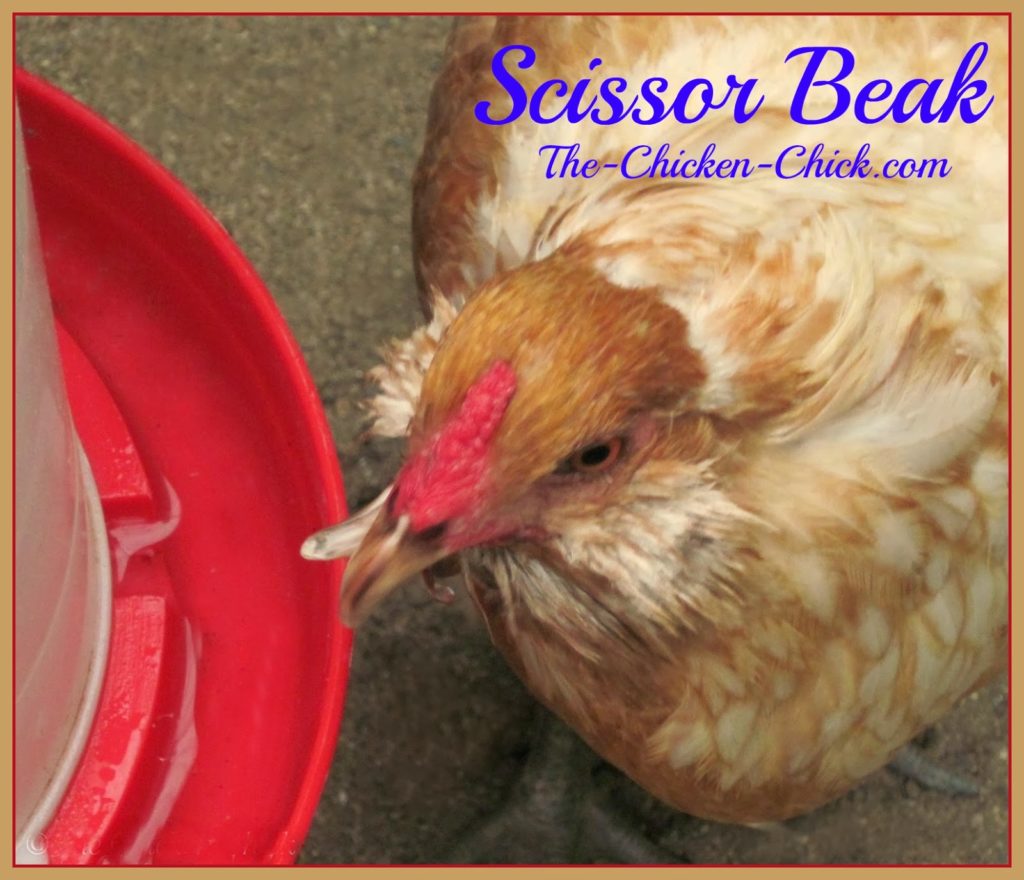
Trouble #iv: Scissor Beak
Scissor beak, aka: crossed beak or crooked beak, is a status characterized by the meridian and bottom beak halves failing to align properly. It can be caused by genetics or the inability to maintain the neb's length and shape by normal honing on rocks or other hard surfaces. Scissor neb is not an automatic bid for euthanasia; nigh chickens with scissor beak can live normal, happy lives with a few modest accommodations. Scissor nib in new chicks can be very subtle as with my Easter Egger, Ethel. It ordinarily worsens over time.
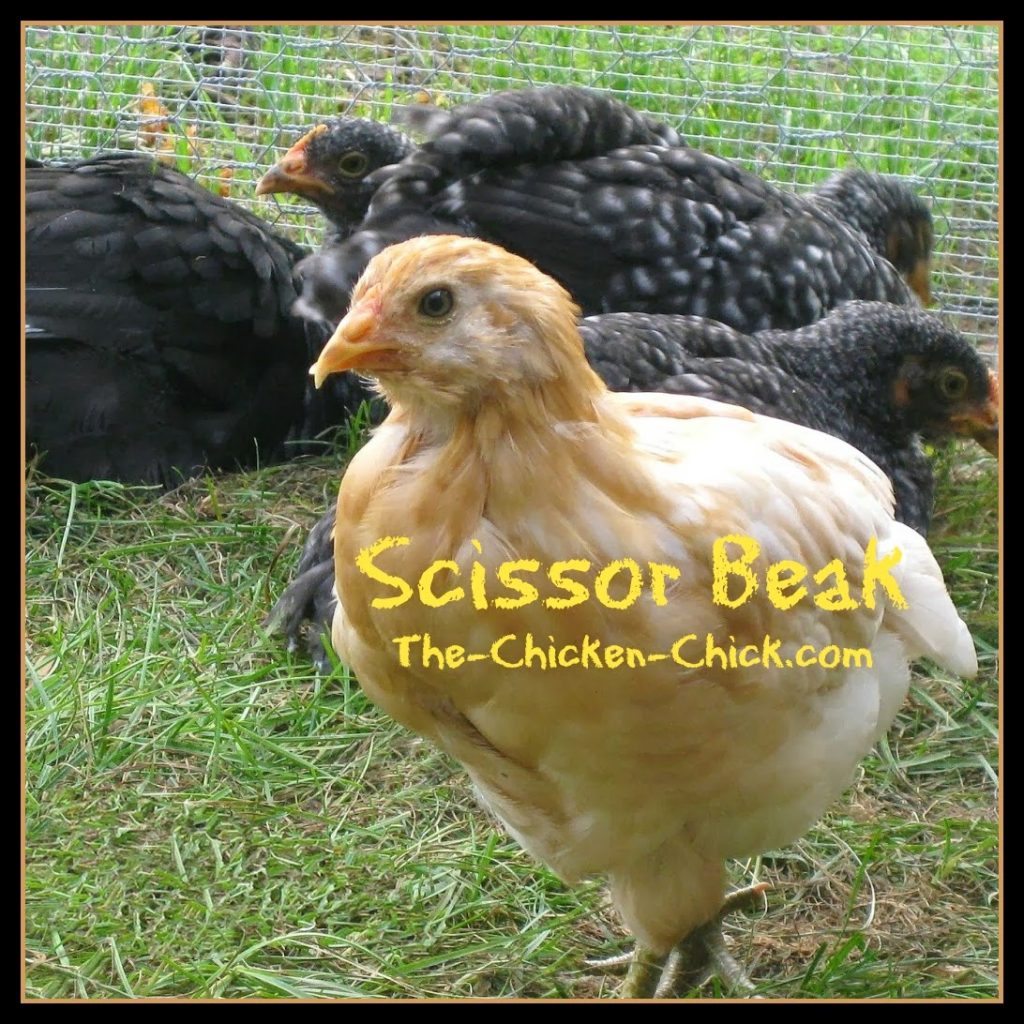
Scissor Pecker Solution
In that location is no at-dwelling house gear up for scissor beak, the only handling is surgical and I accept only heard of one example in which it was performed. Infant chicks with scissor beak may have difficulty eating or sometimes other flock members will foreclose them from accessing the feed. If that is the instance, the chicken will need to be put in a safe identify where only she can access the feed.
Crossed beaked chickens cannot option up pieces of nutrient using both halves of their beaks as a utensil, they adapt by scooping food into the lesser half of their beaks. I find that information technology helped to put Esther's feed in a deep dish, raised up closer to chest level so it had less distance to travel to reach her natural language. This small adaptation is sometimes all it takes to assist crossed-beaked chickens eat. Some chicks find information technology easier to eat wet feed that is the consistency of oatmeal. Grinding upwardly feed in a coffee grinder and calculation water to make a wet brew may help severely scissor-beaked chickens. More on this subject and trimming scissor beak on my weblog hither.
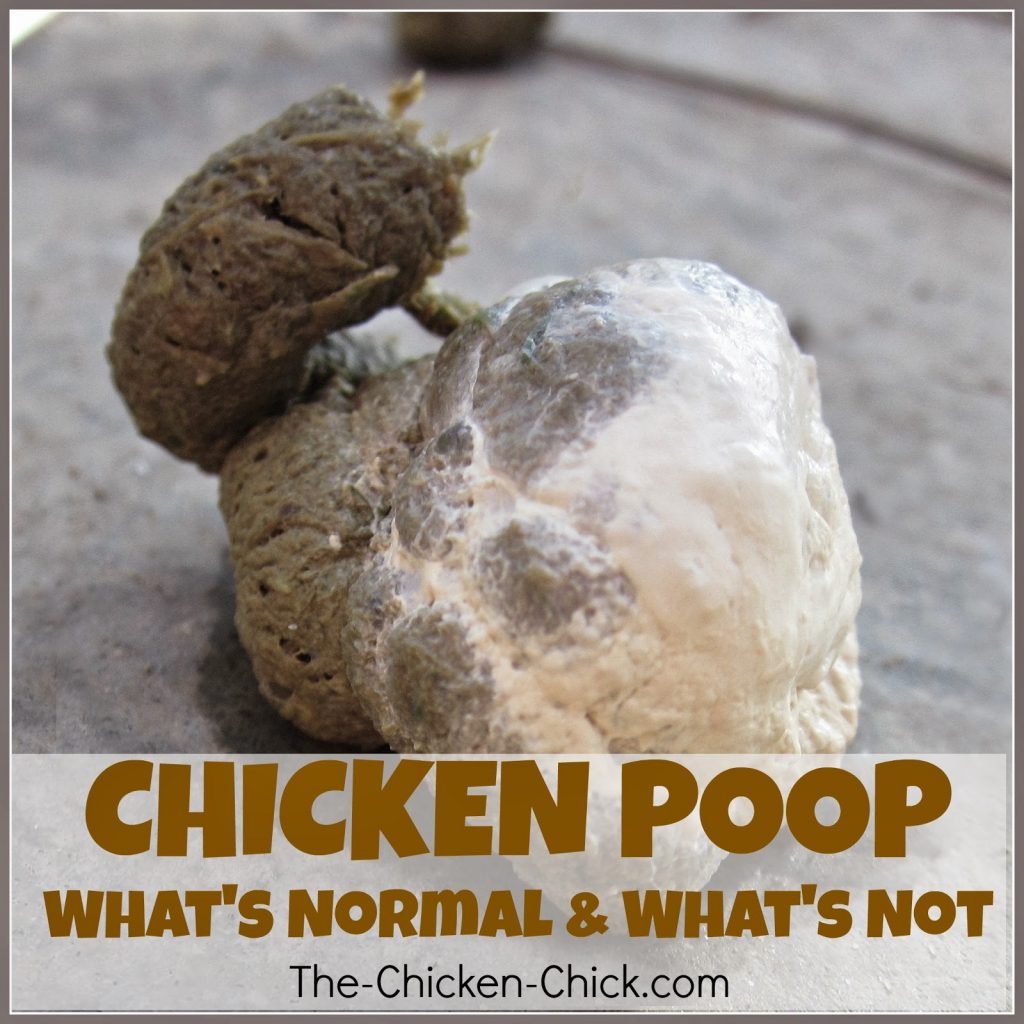
Problem #5:Coccidiosis
Coccidiosis is the most common crusade of death in baby chicks. Coccidiosis (aka: cocci) is acommon intestinal disease, caused by several species of parasites that thrive in warm, wet weather such as a brooder and is transmitted in droppings. The almost common symptoms of cocci in chicks are: diarrhea, blood and/or mucous in debris, sluggishness, listlessness, pale peel color, loss of appetite and failure thrive/abound. Cocci can very rapidly wipe out many chicks in the aforementioned brooder.
(Visit my weblog postal service hither to see a photo of aberrant droppings caused by coccidiosis.)
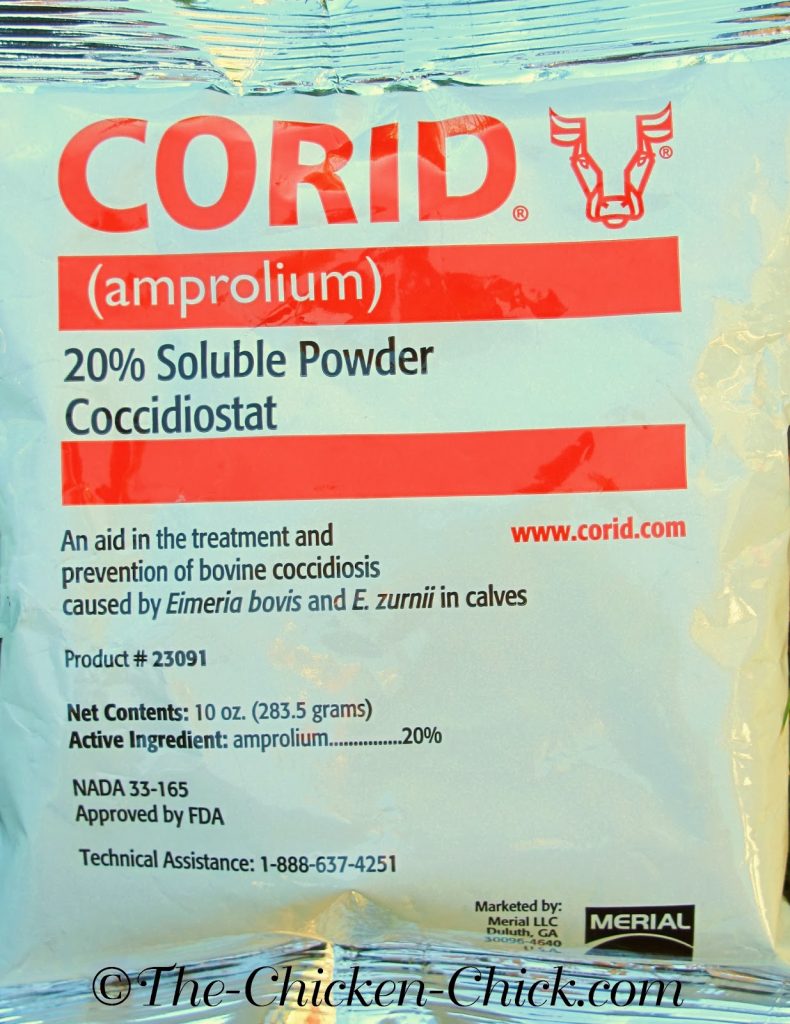
Coccidiosis Solution
Prevention is the key to controlling coccidiosis. Proceed brooders reasonably clean and as dry out as possible. Keep waterers complimentary from droppings and bedding. Using a riser or platform for traditional waterers tin can help proceed debris out of the h2o. A amend choice would be to use poultry nipple waterers, which tin can be made or purchased. Larn about caused immunity, innoculation and why you lot shouldn't demand medicated starter feed for chicks on my blog here. Treatment for an outbreak of coccidiosis can be found here.
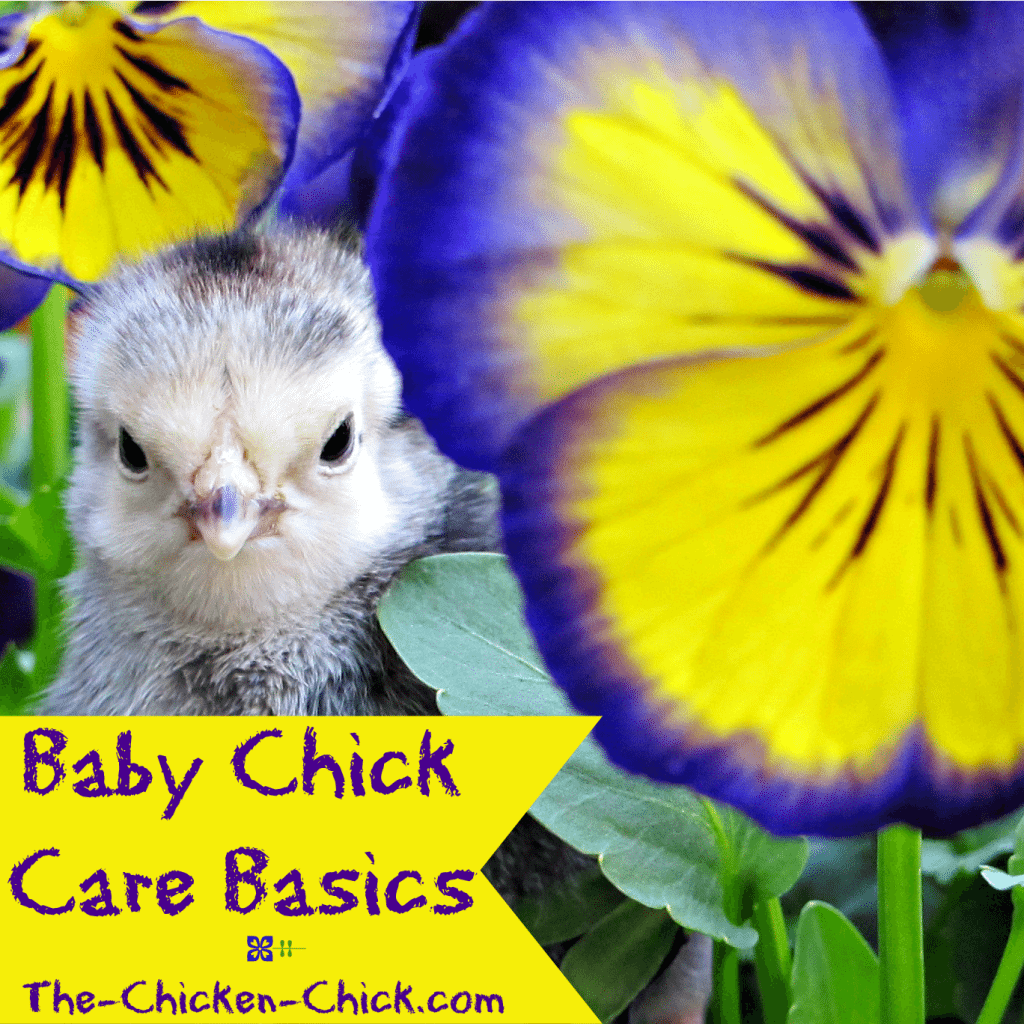
Virtually other ailments and afflictions that can befall infant chicks such as respiratory illnesses and Marek'south affliction usually don't, so don't worry unnecessarily about them. Keeping a clean brooder and clean h2o both go a long style towards keeping baby chicks good for you and happy. Much more information about raising baby chicks can exist constitute on my article here.
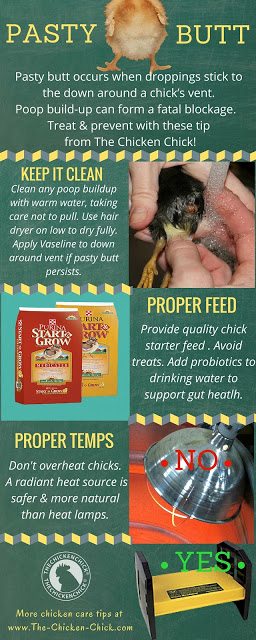

You May Also Like
hitchcockoffearmed.blogspot.com
Source: https://the-chicken-chick.com/5-common-problems-in-baby-chicks-wi/
0 Response to "If a Baby Chick Is Struggling to Live"
Post a Comment